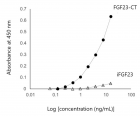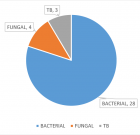Abstract
Research Article
Behavioral factors of Abdominal Obesity and effects of lifestyle changes with Fiber Adequacy
Roberto Carlos Burini*, Hugo Tadashi Kano, Mariana Santoro Nakagaki, Patricia Baston Frenhani and Katia Cristina Portero-McLellan
Published: 25 July, 2017 | Volume 1 - Issue 1 | Pages: 014-022
The etiology of abdominal obesity is multifactorial and has environmental factors as its most expressive risk factors. This study cross-sectional analyzed the association of abdominal fatness with physical inactivity and food inadequacy of 1,557 subjects, both genders, over 35yrs. old, enrolled in an ongoing epidemiological study. Waist circumference (WC) was the primary variable and demographic, social-economic, anthropometric and dietary intake data, were the co-variables. NCEP-ATP III, WHO, IPAQ-long (version 8) and Healthy Eating Index were used for functional definition of variables. Furthermore, longitudinal data from 50 subjects in an exercise protocol for 10 week receiving either regular diet (G1, n=22) or 30g fiber adequacy (G2; =28), were analyzed. The performed statistical analyses used software SAS for Windows, version 9.1 with p=0.05. In a predominantly female sample (74%), 76% aging 35-60yrs, 64% completed elementary school, 73% were living in a low income household, 77.5% overweight. The 62.5% presenting altered WC values were predominantly older, presented higher body fatness, and were consuming low variety-poor quality diet rich in fat (mainly saturated) and lower in fruit. WC correlated negatively with fruit intake and aerobic capacity (VO2max) but only carbohydrate (positive) and fruit intake (negative) were considered independent risk factors for abdominal obesity. In the longitudinal study, both G1 and G2 groups were similar at baseline and G1 maintained the anthropometry values throughout the experiment. Conversely, G2 decreased total body (4%) and WC (7%) fatness, reducing severe obesity by 16%, minimally affecting overweight and eutrophic rates. G2 presented 211% increase in fiber intake and 150% increase in plasma beta-carotene (colorful-fiber marker). Thus, in conclusion, recommended dietary fiber intake (increased fruit and low CHO intake) and physical activity would be the recommended changes against abdominal obesity and, by associating both physical exercises and dietary fiber there was indeed a decrease in abdominal fatness and obesity, predominantly at its higher grade.
Read Full Article HTML DOI: 10.29328/journal.hodms.1001004 Cite this Article Read Full Article PDF
Keywords:
Abdominal obesity, Nutrition, Physical activity, Lifestyle modification program, Fiber adequacy
References
- Hossain P, Kawar B, El Nahas M. Obesity and diabetes in the developing world--a growing challenge. N Engl J Med. 2007; 356: 213-215. Ref.: https://goo.gl/EUutCH
- Burini RC, Kano HT, Burini FHP, McLellan KCP. Metabolic Syndrome-From the Mismatched Evolutionary Genome with the Current Obesogenic Environment to the Lifestyle Modification as a Primary Care of Free-Living Adults in a Brazilian Community. In: Jody Morton editor. Metabolic Syndrome: Clinical Aspects, Management Options a53610-723-4nd Health Effects. Nova Science Publ. (NY) ebook.Chap.5, 2017.
- De Oliveira EP, Manda RM, Torezan GA, Corrente JE, Burini RC. Dietary, anthropometric, and biochemical determinants of plasma high-density lipoprotein-cholesterol in free-living adults. Cholesterol. 2011; 2011: 851750. Ref.: https://goo.gl/ZCq6C8
- De Oliveira EP, Camargo KF, Castanho GK, Nicola M, Portero-McLellan KC, et al. Dietary variety is a protective factor for elevated systolic blood pressure. Arq Bras Cardiol. 2012; 98: 338-343. Ref.: https://goo.gl/qP8Jrk
- De Oliveira EP, Burini RC. High plasma uric acid concentration: causes and consequences. Diabetol Metab Syndr. 2012; 4: 12. Ref.: https://goo.gl/ibJp5Z
- Orsatti FL, Nahas EA, Orsatti CL, de Oliveira EP, Nahas-Neto J, et al. Muscle mass gain after resistance training is inversely correlated with trunk adiposity gain in postmenopausal women. J Strength Cond Res. 2012; 26: 2130-2139. Ref.: https://goo.gl/4iKskg
- Olinto MT, Costa JS, Kac G, Pattussi MP. Abdominal obesity epidemiology amongst adult women resident in Southern Brazil. Arch Latinoam Nutr. 2007; 57: 349-356. Ref.: https://goo.gl/oFkYm9
- WHO, FAO. Diet, nutrition and the prevention of chronic diseases. A report of the WHO Study Group on Diet, Nutrition and Prevention of Noncommunicable Diseases. Nutr Rev. 1991; 49: 291-301. Ref.: https://goo.gl/X6TVEA
- Monteiro RCA, Riether PTA, Burini RC. Effect of a mixed program of nutritional intervention and exercise on body composition and dietary habits in obese postmenopausal women. Rev Nutr. 2004; 17: 479-489.
- Walley AJ, Blakemore AI, Froguel P. Genetics of obesity and the prediction of risk for health. Hum Mol Genet. 2006; 15: 124-130. Ref.: https://goo.gl/yFPcCB
- Burini RC, de Oliveira EP, Michelin E, McLellan KCP. Epidemic obesity: An Evolutionary Perspective on the Modern Obesity Crisis to a Rationale for a Treatment. In Obesity Epidemic. 2014; Ref.: https://goo.gl/dx86lQ
- Pettman TL, Buckley JD, Misan GMH, Coates AM, Howe PRC. Health benefits of a 4-mo groups-based diet and lifestyle modification program for individuals with metabolic syndrome. Obes Res Clin Pract. 2009; 3: 221-235. Ref.: https://goo.gl/itEcDy
- Slavin JL. Dietary fiber and body weight. Nutrition. 2005; 21: 411-418. Ref.: https://goo.gl/bgR2tj
- Craig CL, Marshall AL, Sjöström M, Bauman AE, Booth ML, et al. International physical activity questionnaire: 12-country reliability and validity. Med Sci Sports Exerc. 2003; 35: 1381-1395. Ref.: https://goo.gl/8qEXqt
- Balke B, Ware RW. An experimental study of Air Force personel. US Armed Forces Med J. 1959; 10: 675-688. Ref.: https://goo.gl/DuXkpb
- Janssen I, Heymsfield SB, Baumgartner RN, Ross R. Estimation of skeletal muscle mass by bioelectrical impedance analysis. J Appl Physiol. 2000; 89: 465-471. Ref.: https://goo.gl/ujPfzD
- World Health Organization. Obesity: Preventing and managing the global epidemic. Report of a WHO Consultation. World Health Organ Tech Rep Ser. 1998; Ref.: https://goo.gl/nUZrrD
- NEPA/UNICAMP. Tabela brasileira de composição de alimentos. Taco. Versão 1. Campinas; 2004.
- Instituto Brasileiro de Geografia e Estatística. Tabela de Composição de Alimentos. Rio de Janeiro. 1999.
- Philippi ST. Tabela de Composição de Alimentos: Suporte para decisão nutricional. São Paulo. 2002
- Mota JF, Rinaldi AEM, Pereira AF, Maestá N, Scarpin MM, et al. Adaptação do Índice de Alimentação Saudável ao Guia Alimentar da População Brasileira. Rev Nutr. 2008; 21: 545-552. Ref.: https://goo.gl/B7H51Q
- Burini RC, Kano HT, Nakagaki MS, das Neves Mendes Nunes C, Burini FHP. The lifestyle modification effectiveness in reducing Hypertension in a Brazilian Community: From the epigenetic basis of Ancestral Survival to the Contemporary Lifestyle and Public Health Initiatives. Heighpubs J Clin Hypertens. 2017; 1: 10-31. Ref.: https://goo.gl/Exjbq8
- Castanheira M, Olinto MT, Gigante DP. Socio-demographic and lifestyle factors associated with abdominal fat distribution in adults: a population-based survey in Southern Brazil. Cad Saude Publica. 2003; 19: 55-65. Ref.: https://goo.gl/RgjcCj
- Olinto MT, Nacul LC, Dias-da-Costa JS, Gigante DP, Menezes AM, et al. Intervention levels for abdominal obesity: prevalence and associated factors. Cad Saude Publica. 2006; 22: 1207-1215. Ref.: https://goo.gl/NGyZN4
- Kac G, Velasquez-Melendez G, Coelho MA. Factors associated with abdominal obesity among childbearing-age women. Rev Saude Publica. 2001; 35: 46-51. Ref.: https://goo.gl/KimbRR
- Bueno JM, Martinho HSD, Fernandes MFS, Costa LS, Silva RR. Nutritional assessment and prevalence of chronic diseases in the elderly participating in an assistance program. Ciênc Saúde Coletiva. 2008; 13: 1237-1246.
- Assunção TS, Ursine PGS. Study associated with adherence to non-pharmacological treatment in patients with diabetes mellitus assisted by the Family Health Program, Ventos, Belo Horizonte. Ciênc Saúde Coletiva. 2008; 13: 2189-2197.
- Oliveira EO, Velásquez-Melendez G, Kac G: Demographic and behavioral factors associated with abdominal obesity in the health center of Belo Horizonte, Minas Gerais, Brazil. Rev Nutr. 2007; 20: 361-369.
- Jaime PC, Florindo AA, Latorre MRDO, Brasil BG, dos Santos ECM, et al. Prevalence of overweight and obesity among individuals with HIV / AIDS, use of retroviral therapy in high power. Rev Bras Epidemiol. 2004; 7: 65-72.
- Fogelholm M, Malmberg J, Suni J, Santtila M, Kyrolainen H, et al. Waist circumference and BMI are independently associated with the variation of cardio-respiratory and neuromuscular fitness in young adult men. Int J Obes (Lond). 2006; 30: 962-969. Ref.: https://goo.gl/8n3uMx
- Souza LJ, Gicovate C, Chalita FEB, Reis AFF, Bastos DA, et al. Prevalence of obesity and cardiovascular risk factors in Campos, Rio de Janeiro. Arq Bras Endocrinol Metab. 2003, 47: 669-676. Ref.: https://goo.gl/UnVwYW
- Martins IS, Marinho SP. The potential of central obesity anthropometric indicators as diagnostic tools. Rev Saude Publica. 2003; 37: 760-767. Ref.: https://goo.gl/45QtsZ
- Scaglius B, Lancha Junior AH. Underreporting of energy intake in food intake assessment. Rev Nutr. 2003; 16: 471-481.
- Johansson L, Solvoll K, Bjorneboe GE, Drevon CA. Under- and overreporting of energy intake related to weight status and lifestyle in a nationwide sample. Am J Clin Nutr. 1998; 68: 266-274. Ref.: https://goo.gl/x2ZmS5
- Goris AH, Westerterp-Plantenga MS, Westerterp KR. Undereating and underrecording of habitual food intake in obese men: selective underreporting of fat intake. Am J Clin Nutr. 2000; 71: 130-134. Ref.: https://goo.gl/iiFDrw
- Levy-Costa RB, Sichieri R, Pontes Ndos S, Monteiro CA. Household food availability in Brazil: distribution and trends (1974-2003). Rev Saude Publica. 2005; 39: 530-540. Ref.: https://goo.gl/6HW7H4
- Kilkkinen A, Heistaros S, Laatikainen T, Janus E, Chapman A, et al. Prevention of type 2 diabetes in a primary health care setting: interim results from the Greater Green Triangle (GGT) Diabetes Prevention Project. Diabetes Res Clin Pract. 2007; 76: 460-462. Ref.: https://goo.gl/VnVC9U
- Sloth B, Krog-Mikkelsen I, Flint A, Tetens I, Bjorck I, et al. No difference in body weight decrease between a low- glycemic-index and a high-glycemic-index diet but reduced LDL cholesterol after 10-wk ad libitum intake of the low-glycemic-index diet. Am J Clin Nutr. 2004; 80: 337-347. Ref.: https://goo.gl/F5oTu9
- Kohl HW, Dunn AL, Marcus BH, Blair SN. A randomized trial of physical activity interventions: design and baseline data from Project Active. Med Sci Sports Exerc. 1998; 30: 275-283. Ref.: https://goo.gl/CsygKY
- Waxman A1; World Health Assembly. World Health Organization: Global strategy on diet, physical activity, and health. Food Nutr Bull. 2004; 25: 292-302. Ref.: https://goo.gl/dr5X96
Figures:

Figure 1
Similar Articles
Recently Viewed
-
Closure of Post-infarct Basal Ventricular Septal Defect by Using an Atrial Septal Defect Closure Device: A Case ReportCeyhun Gökhan*,Arslan Ümit,Dursun Lezgin,Aydin Muhammet,Şeker Cüneyt. Closure of Post-infarct Basal Ventricular Septal Defect by Using an Atrial Septal Defect Closure Device: A Case Report. J Clin Med Exp Images. 2024: doi: 10.29328/journal.jcmei.1001033; 8: 013-016
-
Metabolic syndrome: A case reportDragan Klaric,Marta Martinis*,Marta Klaric. Metabolic syndrome: A case report. Ann Clin Endocrinol Metabol. 2021: doi: 10.29328/journal.acem.1001022; 5: 031-035
-
Hypercalcaemic Crisis Associated with Hyperthyroidism: A Rare and Challenging PresentationKarthik Baburaj*, Priya Thottiyil Nair, Abeed Hussain, Vimal MV. Hypercalcaemic Crisis Associated with Hyperthyroidism: A Rare and Challenging Presentation. Ann Clin Endocrinol Metabol. 2024: doi: 10.29328/journal.acem.1001029; 8: 001-003
-
Evaluation of novel culture media prepared from plant substrates for isolation and identification of Cryptococcus Neoformans Species ComplexEllabib M*,Krema ZA,Mokthar ES,El Magrahi HS,Eshwika A,Cogliati M. Evaluation of novel culture media prepared from plant substrates for isolation and identification of Cryptococcus Neoformans Species Complex. Int J Clin Microbiol Biochem Technol. 2018: doi: 10.29328/journal.ijcmbt.1001002; 1: 009-013
-
A Review on filaricidal activity of phytochemical extracts against filariasis and the Parasites Genomic DiversityAM Gumel*,MM Dogara. A Review on filaricidal activity of phytochemical extracts against filariasis and the Parasites Genomic Diversity. Int J Clin Microbiol Biochem Technol. 2018: doi: 10.29328/journal.ijcmbt.1001004; 1: 024-032
Most Viewed
-
Impact of Latex Sensitization on Asthma and Rhinitis Progression: A Study at Abidjan-Cocody University Hospital - Côte d’Ivoire (Progression of Asthma and Rhinitis related to Latex Sensitization)Dasse Sery Romuald*, KL Siransy, N Koffi, RO Yeboah, EK Nguessan, HA Adou, VP Goran-Kouacou, AU Assi, JY Seri, S Moussa, D Oura, CL Memel, H Koya, E Atoukoula. Impact of Latex Sensitization on Asthma and Rhinitis Progression: A Study at Abidjan-Cocody University Hospital - Côte d’Ivoire (Progression of Asthma and Rhinitis related to Latex Sensitization). Arch Asthma Allergy Immunol. 2024 doi: 10.29328/journal.aaai.1001035; 8: 007-012
-
Causal Link between Human Blood Metabolites and Asthma: An Investigation Using Mendelian RandomizationYong-Qing Zhu, Xiao-Yan Meng, Jing-Hua Yang*. Causal Link between Human Blood Metabolites and Asthma: An Investigation Using Mendelian Randomization. Arch Asthma Allergy Immunol. 2023 doi: 10.29328/journal.aaai.1001032; 7: 012-022
-
An algorithm to safely manage oral food challenge in an office-based setting for children with multiple food allergiesNathalie Cottel,Aïcha Dieme,Véronique Orcel,Yannick Chantran,Mélisande Bourgoin-Heck,Jocelyne Just. An algorithm to safely manage oral food challenge in an office-based setting for children with multiple food allergies. Arch Asthma Allergy Immunol. 2021 doi: 10.29328/journal.aaai.1001027; 5: 030-037
-
Snow white: an allergic girl?Oreste Vittore Brenna*. Snow white: an allergic girl?. Arch Asthma Allergy Immunol. 2022 doi: 10.29328/journal.aaai.1001029; 6: 001-002
-
Cytokine intoxication as a model of cell apoptosis and predict of schizophrenia - like affective disordersElena Viktorovna Drozdova*. Cytokine intoxication as a model of cell apoptosis and predict of schizophrenia - like affective disorders. Arch Asthma Allergy Immunol. 2021 doi: 10.29328/journal.aaai.1001028; 5: 038-040

If you are already a member of our network and need to keep track of any developments regarding a question you have already submitted, click "take me to my Query."



















































































































































